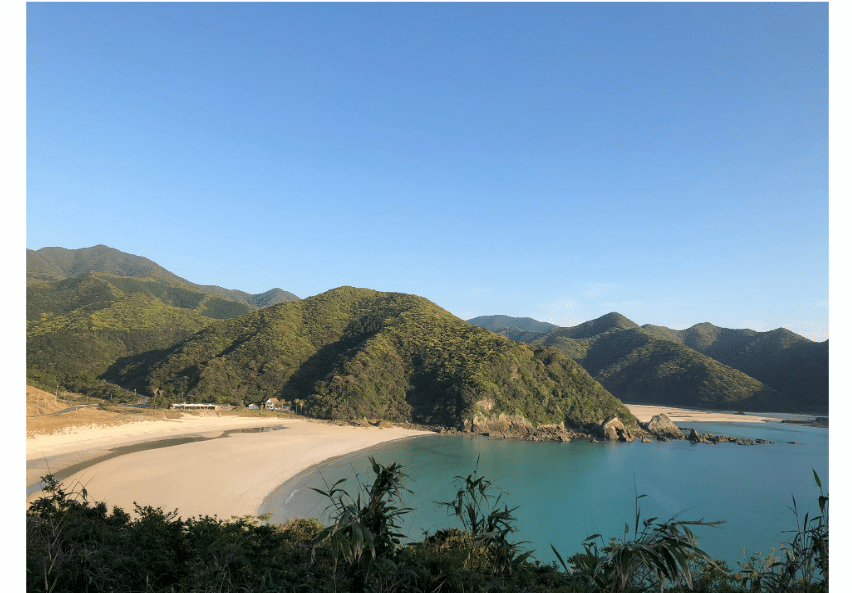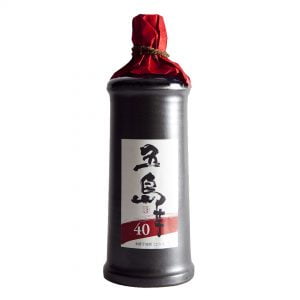

Five Islands (五島列島)
Goto Island is a chain of five islands on the west coast of Japan. The word for five in Japanese is 五 pronounced ‘Go,’ and in Japanese, the chain of islands is called 五島列島, meaning five island chain.
The group of islands lies about 100 kilometers off the coast of Kyushu and is part of Nagasaki prefecture. Goto islands consist of five main islands and hundreds of smaller islands that make up the overall archipelago.
The Goto Islands are blessed with some of the most beautiful natural scenery in Japan. In particular, the shoreline is a spectacle to behold, with its rugged coastline beaten down by the incoming sea. Some of the best views are from the traditional Japanese houses overlooking the coasts and beaches of the islands.
Island of Churches
Goto Islands are also famous for their churches and their history of “Hidden Christians.” When the Europeans first arrived, they not only traded but also introduced their culture, including Christianity. Over the years, Christianity spread, and before long, areas like Nagasaki had some of the largest Christian populations in Japan. However, Christianity was banned during the Edo period, and many of the Christians went into hiding. Some of them escaped persecution and hid on Goto Island.
Today, Goto Islands have over 50 churches still standing, and some of the churches have been marked with UNESCO World Heritage status.

Sweet Potatoes and Tempura
Due to its closeness with the Asian mainland and its isolation, Goto island has a unique culture, unlike the rest of Japan. The southwestern islands of Japan were some of the first places where the Europeans and the Chinese had trade relations. The Portuguese first arrived in Japan in 1543 and set up a trading post in Nagasaki. One of the interesting results of the Portuguese influence is the introduction of fried food in batter such as fried green beans called peixinhos da horta. The Portuguese would eat this simple fried dish during the days of fasting and prayer known as quatuor anni tempora. The Japanese were amazed at the fried dish and eventually made it their own into what we know today as tempura.
Sweet potatoes, on the other hand, came through trade with the Chinese mainland. The sweet potatoes are native to South America and made their way to Japan from the Spanish to India, then to the Philippines and eventually to Japan through the Chinese. The sweet potato eventually became an important crop in western Japan. Japanese sweet potato is called satsumaimo (さつまいも, サツマイモ).
The sweet potato was grown extensively on Goto Island when the Japanese Christians brought the tuber to the islands to escape persecution. The sweet potato became a vital source of food on the isolated island.
The Best Kept-Secret – Shochu
One of the best-kept secrets of Japan is the distilled spirit called Shochu. Often mistaken for Korean Shoju, Japanese Shochu is made from a variety of ingredients such as the Japanese sweet potato or barley. Shochu can also be made from rice and buckwheat. Shochu is a distilled drink similar to vodka and can be drunk neat or as a mixer. In fact, shochu outsells sake in Japan, especially in western Japan. Shochu is popular among women and the younger generation. If you like Japanese whiskey, you have to try Japanese Shochu!
Some of the best shochu comes from western Japan, including Goto Island.
One of the breweries on Goto island is called the Goto Islands Brewery Co. Ltd. and brews Shochu grown on Goto Island. The brewery produces shochu from various ingredients, including the Japanese sweet potato. The most premium of their shochu is the Goto Imo 40 Shochu that is made from sweet potato.
This is a smooth and pleasant tasting shochu. And as I mentioned earlier, if you love Japanese Whiskey, you will love Japanese shochu and, in particular, the Goto Imo 40. This shochu is best drunk neat or on the rocks. This shochu is not easy to find in Japan, even in Tokyo. It is a regional drink that is drunk by the locals not often exported due to limited quantities. However, you can now buy shochu from the Goto Islands Brewery at Epicureat.com. Epicureat imports this shochu and many other products directly from Nagasaki.
